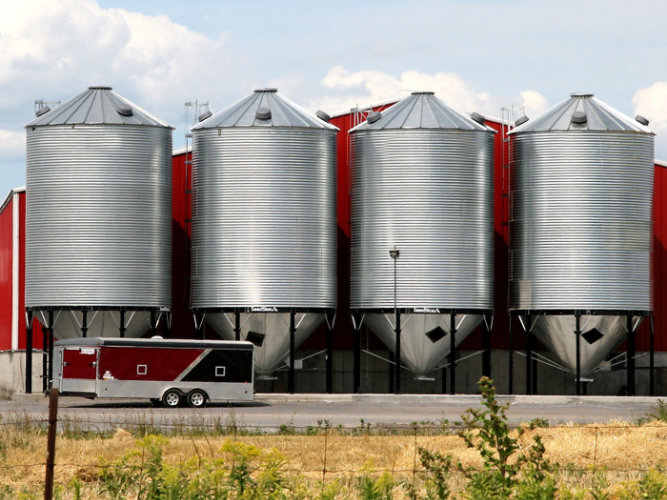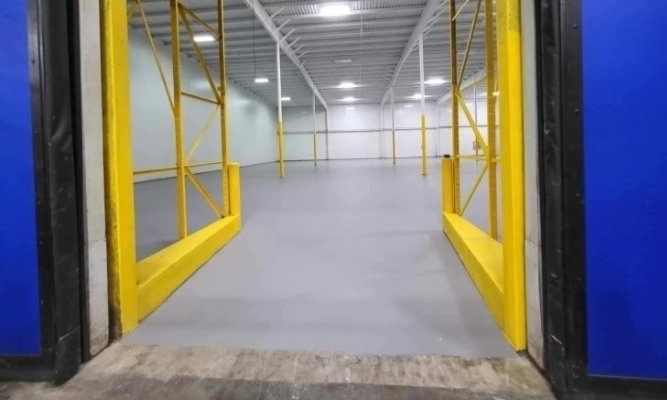Tank Lining Innovations for the Food and Beverage Industry
How New Tank Linings are Transforming Food and Beverage Processing
by Rita Kamoutsis, Market Segment Manager – Food & Beverage, Sherwin-Williams Protective & Marine

Effective tank linings are crucial in maintaining the safety and integrity of food and beverage products during storage and transport. By forming a barrier between the tank interior and the corrosive substances inside, these coatings shield the tank surfaces from damage and prevent any unwanted contamination from affecting the stored goods. This is true for storage and production tanks used in food and beverage processing facilities, as well as the railcars used to transport ingredients and finished goods to and from facilities.
In industries such as dairy, brewery and soft drink production – as well as other wet and dry food settings – hygiene, safety and quality assurance are essential to success. These industries require lining materials that are non-toxic, non-reactive and resistant to bacterial growth to ensure products remain safe and consumable.
Choosing the right tank lining material is critical in these settings, as it safeguards products, protects consumers and ensures regulatory compliance. Recent innovations in tank lining technology address these key factors and offer new levels of quality and durability.
Protecting Products – and Investments
From the owner’s perspective, proper food and beverage tank linings are critical to guarantee their products are safe for consumers – and that the tanks themselves are protected and have a long, functional lifespan.
Food and beverage tank linings provide a safeguard against the damaging effects of corrosion and other forms of wear and tear. By ensuring the longevity of tanks, the need for costly repairs or replacements is minimized, thus protecting a business owner’s investment.
In addition, tank linings play a crucial role in meeting regulatory requirements for food and beverage safety, hygiene and environmental protection. As a business owner, failure to comply with these regulations could result in hefty fines, legal action and a negative reputational impact.
Prioritizing proper tank linings can safeguard a business’s success and standing.
Fresh Approaches
In today’s competitive and evolving food and beverage industry, tank linings play a critical role in ensuring product quality, safety and longevity. To address the many challenges faced by this industry, new and innovative tank lining solutions have emerged in recent years.
One of the most significant innovations is the development of specialized high-performance, corrosion-resistant coatings. These materials are expressly designed to withstand the harsh conditions and corrosive substances that are common in food and beverage processing. They are easy to clean, non-toxic and non-reactive – making them ideal for use in a range of food and beverage applications, from dairy production to soft drink manufacturing.
Another exciting innovation in the tank lining space is the use of antimicrobial linings. These linings help prevent the growth of harmful bacteria and other microorganisms that can cause contamination and spoilage of products. By adding an extra layer of protection, antimicrobial tank linings ensure that products remain safe and of high quality.
Finally, tank lining maintenance has also seen advancements. Self-healing linings are an increasingly popular option, as they can repair small cracks and scratches themselves without requiring costly repairs or replacement. These solutions extend the life of the tank and reduce maintenance, making them an attractiveoption for many food and beverage processors.
Figure 1. Regular inspection and maintenance of tank linings is essential to ensure continued protection of stored products. By following proper maintenance and inspection procedures, owners can prevent leaks, contamination and other problems that can lead to costly repairs and downtime.
Figure 2. Tank linings serve as a protective barrier between the stored product and the tank itself, preventing contamination and ensuring compliance with regulatory requirements.
Overcoming Complex (and Costly) Challenges
Tank linings are designed to meet the unique needs of each product, considering factors like acidity, temperature and viscosity. By preventing leaks, contamination and other problems, these coatings can help reduce maintenance needs and prolong a tank’s service.
Linings also prevent the absorption of flavors and odors. By creating a smooth, non-porous surface that is easy to clean and sanitize, these coatings make sure products remain pure and uncontaminated. This helps reduce the risk of spoilage and other quality issues.
It is important to select the right type of lining for each specific application and ensure compatibility with particular products being stored. Proper maintenance and inspection procedures should also be followed to ensure that the lining and tank remain in good condition over time.
Main Factors to Consider for Lining
As the food and beverage industry continues to evolve, tank lining solutions have adapted to changing raw materials, economic climates and regulatory requirements. Linings offer practical, effective ways to meet the challenges of a dynamic and growing industry, but choosing the right one requires the consideration of several factors, including the type of product and a business’s specific conditions and needs.
- Compliance: For storage and transport tanks, it’s vital to select a coating that’s compliant with relevant regulations, such as the U.S. Food and Drug Administration (FDA), NSF and U.S. Department of Agriculture requirements for food and beverage contact surfaces. Standards established by the FDA specifically outline the conditions under which certain types of polymers may be safely used in food-contact applications. FDA-approved linings are qualified for either indirect food contact for dry foods, direct contact for wet foods or a combination of the two.
- Chemical Resistance: It’s essential to establish that a lining can withstand exposure to the specific chemicals and ingredients used in a facility’s processes. The pH level and temperature of the substances in the tank should be considered, as well as potential exposure to acids, alkalis and solvents. If the lining is not resistant to these chemicals, it may deteriorate over time, leading to product contamination or leaks.
- Corrosion: If not lined correctly, or properly maintained, metal tanks may be prone to corrosion from the food or beverage being stored, which can weaken the tank’s structure and cause leaks.
- Temperature Changes: Extreme temperature changes can cause the tank lining to expand or contract, which can cause cracking or other damage to sub-optimal materials.
- Durability: The lining should be able to stand up to the stresses and abrasion that can occur during tank operation, including cleaning and sterilization processes. This will help to reduce maintenance requirements and prolong a lining’s lifespan.
- Application Method: Consider the ease of application, such as the use of a single-leg airless or plural-component sprayer – and the curing time that will be required for the lining. It’s also important to know if the lining requires a force cure or if it cures in ambient temperatures. Some materials may require more labor and downtime to apply than others, which can impact the cost and scheduling of the installation.
- Customization: Different products have different properties, and the linings must be specified accordingly. For example, acidic products such as vinegar require linings that are resistant to corrosion, while high-temperature products require linings that can withstand thermal expansion.
- Sustainability: Environmental aspects of linings are also important. For example, some lining materials help to reduce food waste, improve food safety and are recyclable or biodegradable. Formulations may also offer low levels of volatile organic compounds (VOCs) and per- and polyfluoroalkyl substances (PFAS) or be heavy metal-free. All of these factors reduce the lining’s impacts to the environment.
- Cost: While important, cost should not be the sole deciding factor. The total cost of ownership – including maintenance and replacement costs – should be factored in when determining the total value.
- Wear and Tear: Constant movement of food and beverage products in a tank can lead to cracking or peeling of the lining – which can also lead to contamination of the product. The flexibility and movement of the tanks or rails during transport have a huge impact in the maintenance and the lifecycle of the tank.
- Cleaning and Hygiene: Proper cleaning of a lining is critical to maintain the quality and safety of the product. However, it’s important to note the cleaning process can also damage the lining if not performed correctly. A lining can also improve the hygiene of a food or beverage tank by providing a smooth, non-porous surface that is easy to clean and disinfect. Appropriate coatings can stymie the accumulation of bacteria and other microorganisms on interior surfaces, which can otherwise cause contamination of the product.
Bottom Line
By taking into account several important factors, a food and beverage producer can ensure the selection of suitable and durable tank linings – which make following regulatory requirements, emphasizing sustainability, and making (and storing) safe, high-quality products easier and more affordable. Working with a trustworthy supplier can assist with selecting and installing the appropriate coating for any facility’s particular needs and goals to better serve its bottom line.
Discover More
Industry Expertise and Innovation
See how we help customers find customized solutions for their project and application challenges.
Our Food & Beverage Expertise
Explore our industry solutions to ensure compliance and durability from ceilings to floors.
LEARN MOREProduct Lookup
Find out more about our innovative coatings for a variety of industries.
FIND A PRODUCT

